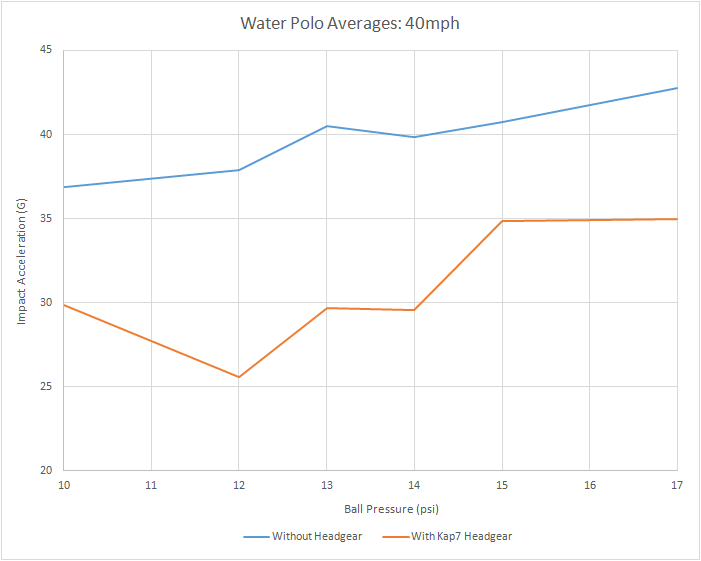Since our testing finished last quarter, our focus has now shifted to analyzing our results and presenting them. For the first few weeks, we plotted the resulting G-force magnitudes for the various pressures and speeds of our water polo balls and calculated the average impact force for each pressure and speed. We also compared the average impact force experience with and without the headgear. From our graph, it is clear that there is a significant reduction in the magnitude of impact forces when the headgear is worn. Within the next few weeks we will be presenting our findings to Kap7, the company who manufactures and provided us with the water polo headgear. They had already done some testing to conclude that their headgear “reduces the impact the head takes in a collision…” (Kap7.com). The nature of our tests will be able to support that claim quantitatively.
In addition to our presentation with Kap7, we will be using our results in other publications throughout the quarter. Mainly, we will be creating a comprehensive technical report that explains our project for UROP (Undergraduate Research Opportunities Program). There will also be an Honors Thesis Report for our team lead, Wyatt Moscoso.
Beyond UCI, we hope to work with Kap7 and the NCAA regarding regulations for headgear in water polo. Currently, the NCAA states that there is no scientific evidence to support that padded headgear helps to prevent concussions and has a rule that prohibits the use of padded caps. Our project provides that scientific evidence. This work falls under a greater study lead by Dr. James Hicks. A recent UCI news article and video, “Heading off concussions” by Tom Vasich, highlights the study and features our project.
By Sherilyn Bumatay, Concussive Forces in Competitive Sports

